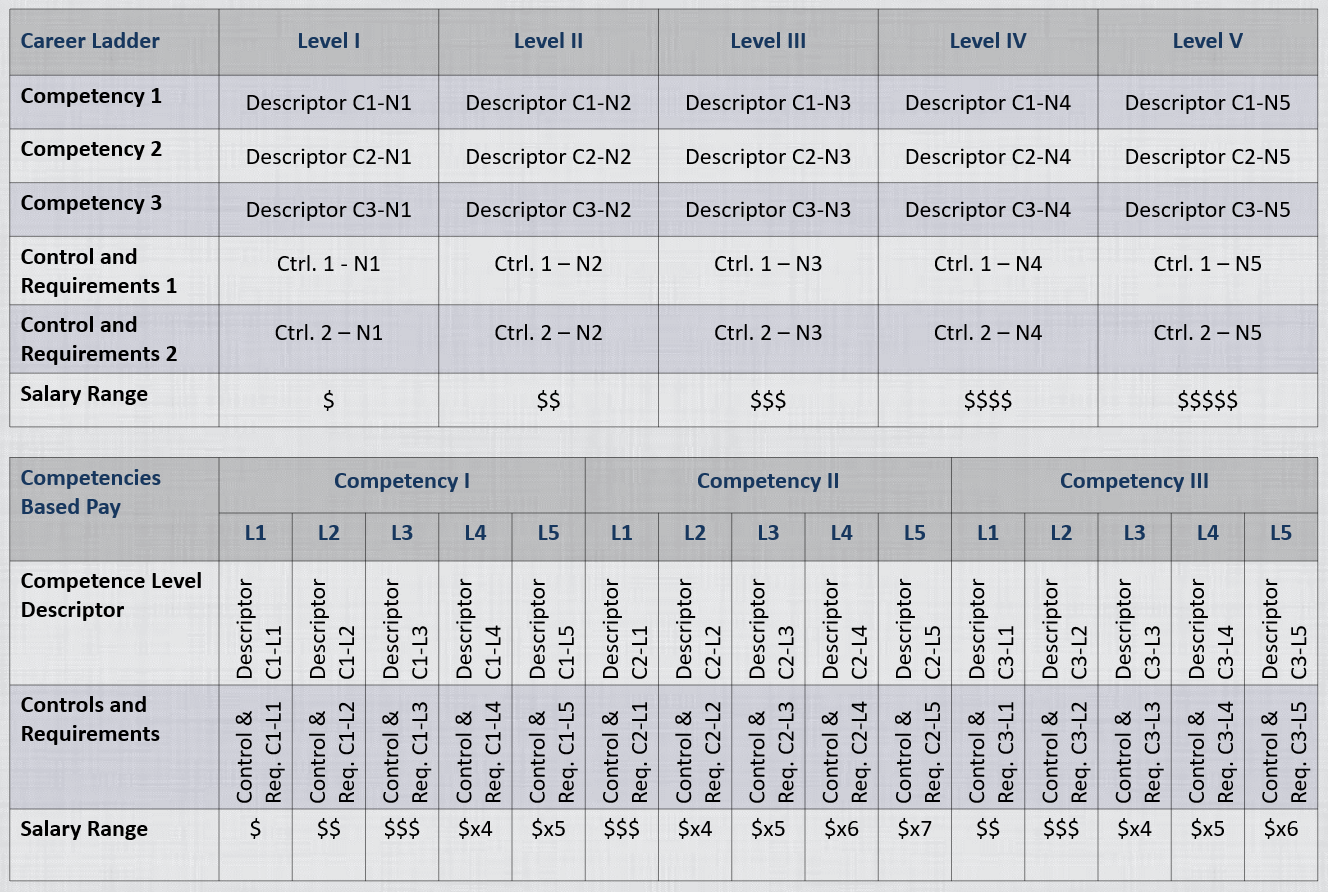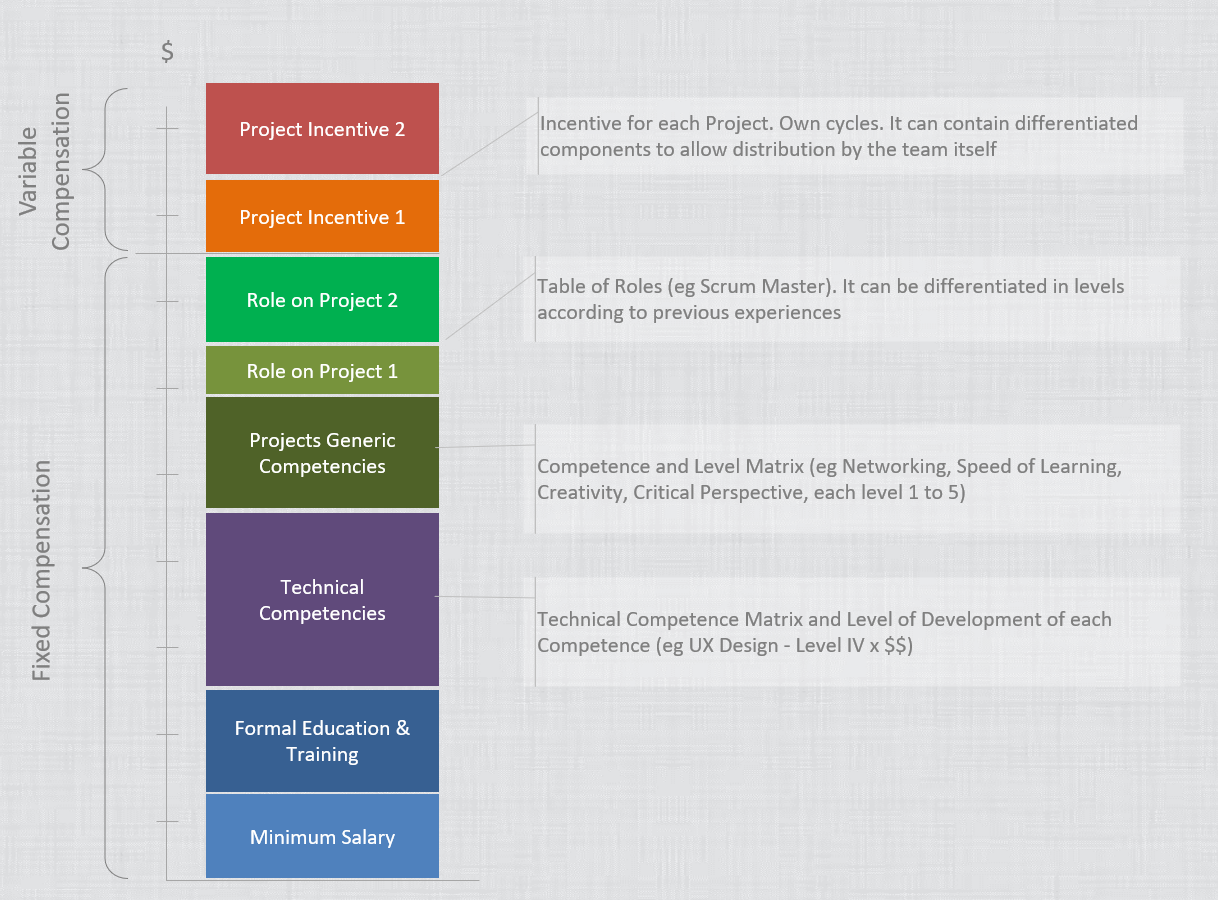Agile Compensation
Agile cells payagile remuneration
agile paymente - competencies based payteams compensation
competencies based compensation
agile paysalary agile scrum
pay for skillsknowledge based compensation
competency compensationcompesation for teams
teams remunerationAgile Compensation
More and more companies are adopting high efficiency methodologies for teamwork such as Agile/Scrum or similar ones, with more or less formality. The reasons for their implementation do not only include the search for efficiencies, but also aim at achieving a deep and sustained cultural change.Some of the essential principles of Agile Methodologies may be difficult to accept for colleagues who are used to traditionally individualistic schemes. But that's what change is all about, isn't it?
Part of a company's culture can be visualized by observing what we reward, encourage and remunerate, and in this line one of the main impacts of adopting Agile methodologies is the "discomfort" that is generated in the application of traditional Human Resources processes - especially those of compensation - since most of them are based and governed by the organization chart of the company, and precisely the Agile methodologies leave aside the organization charts to focus on the team management.
Agile Compensation considers and respects the essence of the Agile methodology to generate payment levels, incentives and review mechanisms compatible with its principles. Its implementation may require leaving aside some of the more entrenched forms of traditional compensation management.
| Compensation Elements | Traditional | Agile |
|---|---|---|
| Base Structure | Organization Chart | Teams & Projects |
| Cicles | Annual Continuous |
Sprints and Milestones Completion and Waiting Time |
| Pay Level | Based on the relation between Job/Position-Market-Individual | Based on the relation between Competencies-Teams-Projects-Contribution |
| Compensation Factors | Job Evaluation, mainly Responsibility | Knowledge and Role. Contribution to the Project and the Team1 |
| Salary Scales | Narrow band widht, cost control oriented | Broadbanding, oriented to facilitate the teams conformation |
| Incentives | Individual achievement prevails | Based on collaborative work. Seeks to avoid individual incentives |
1 Allows for payment levels independent of organizational structure The hierarchy does not necessarily act as a restrictive framework, allowing the possibility of someone earning more than their superior.
Among the various changes to be made to move from a traditional compensation scheme to an Agile Compensation scheme we must consider the use of competency-based mechanisms to define payment levels.
There are several ways to implement competency-based compensation schemes. The two most commonly used are the Career Ladders where the emphasis is on the level of development of the collaborator, and Competencies Based Pay focused on the skills needed to make projects and teams successful.

When implementing Agile Compensation, special care must be taken in
- Respect the fundamental principles of the adopted methodology (manifesto) including focus, priorities and flexibility
- Having control mechanisms that guarantee an adequate cost management
- Identify and use the elements that strictly add more value to the company and its projects
- Using simple mechanisms that allow clear communication and provide payment justification

If you are facing a challenge that involves elements such as these described, do not hesitate to contact us. From CompStrategy we can help you to generate tools that allow an excellent management to remunerate high efficiency teams, whether they are Agile or similar. Our services in Agile Compensation include:
- Design of the Agile Compensation Methodology adapted to the target population and culture of the company
- Definition of the general administration framework/Payment by Competence policy
- Identification of Project Competencies and other Compensable Factors to be considered in Agile Compensation
- Calibration of payment levels associated with each factor, competence and role
- Identification of teams that can be remunerated based on skills
- Design of control elements to avoid entering into excessive costs or lack of competitiveness vs market
- Review of the competencies to be compensated vs. the creation of value/results of the project and for the company
These are some of our Areas of Expertise:
